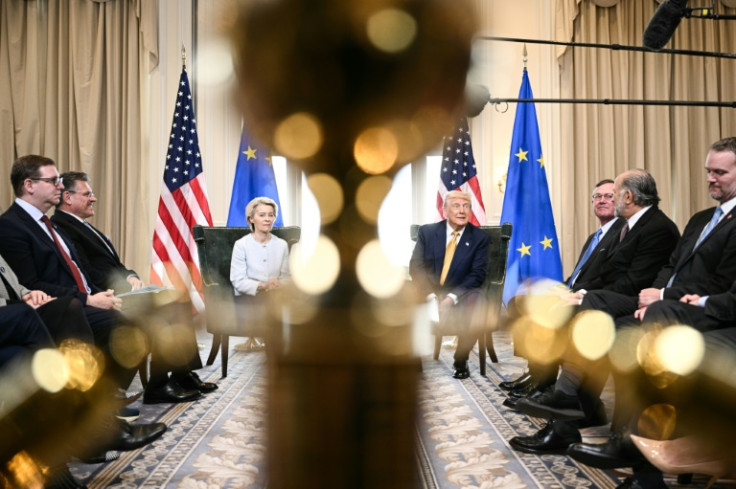Small Firms, Big Trouble: The Quiet Losers of The EU–US Trade Deal

When the U.S. and European Union (EU) announced a major trade deal Sunday, headlines focused on the geopolitical implications, tariff ceilings and diplomatic coordination. But behind the official smiles and celebratory press releases, a quieter story is unfolding—one that involves the small and medium-sized businesses that make up the economic backbone of the EU.
These firms, which account for 99 percent of EU non-financial companies and around two-thirds of employment across the bloc, were largely absent from the negotiating table. And now, they are poised to absorb a disproportionate share of the costs from the new agreement.
A Flat Tariff, a Heavy Price
The deal imposes a flat 15 percent tariff on nearly all EU goods entering the U.S., with few exceptions. As reported by Reuters, high-profile sectors such as aerospace, rare earths and defense manufacturing received carve-outs or zero-duty terms. But most everyday exports—ranging from specialty foods to consumer products—now face a sudden cost increase.
According to AP News, both European and American businesses are bracing for price hikes. For large corporations, that cost may be absorbed or passed on. But small firms with limited pricing power and razor-thin margins are far more vulnerable.
The View from the Ground: Soap, Cheese and Lost Orders
Take, for instance, a small cosmetics exporter in Provence, or a cheesemaker in Normandy. These are the kinds of businesses that rely on modest volumes, strong customer loyalty, and niche positioning. A 15 percent tariff on goods that were previously exported tariff-free is not just a challenge—it can be a market killer.
Sophie Leclerc, owner of a mid-sized skin care company, told reporters that the deal leaves her few options. "We can either raise prices and risk losing our American distributors, or we pull out of the U.S. altogether," she said in an interview cited by France 24. "Either way, we lose."
Regulatory Complexity Adds to the Burden
The new agreement also introduces expanded compliance requirements. Rules of origin provisions, stricter labeling regulations, and dual documentation standards are expected to add significant administrative costs. These burdens are magnified for smaller businesses that lack in-house legal or logistics departments.
A recent policy study from the European Parliament warned that non-tariff barriers—not tariffs themselves—represent the greatest obstacle to international expansion for SMEs. The current deal, critics argue, does little to simplify that environment.
Asymmetry in Adaptability
Large companies with diversified supply chains may be able to adjust production or distribution to reduce exposure to tariffs. For example, a multinational carmaker can shift assembly lines to the United States or route parts through zero-tariff jurisdictions. But small businesses do not have this kind of flexibility. Many operate from a single facility and export directly to clients abroad.
According to Euractiv, some small producers are already cutting shipments to the United States and reconsidering their investment in transatlantic partnerships.
What Could Have Been Done Differently
Economists and SME advocates say the EU missed an opportunity to secure more targeted relief. Proposals that were discussed but ultimately excluded from the final deal included phased tariffs for small-scale exporters, simplified customs procedures for low-volume shipments, and transitional assistance funding for vulnerable sectors.
Politico Europe reported that the urgency of reaching a macro-level political accord likely sidelined more granular negotiations. "The politics of diplomacy eclipsed the practicalities of real-world trade," one unnamed EU official told the outlet.
Numbers Tell the Story
According to Eurostat, small and medium-sized enterprises:
- Represent 99 percent of EU businesses
- Employ more than 100 million people
- Account for roughly 40 percent of EU exports to the United States
Before the agreement, the average tariff on EU consumer goods imported to the U.S. was between 1.3 and 2.1 percent. That figure has now jumped to a flat 15 percent across most categories, based on terms outlined by The Guardian.
The EU–US trade deal was designed to bring stability and predictability to transatlantic commerce after years of tariff threats and retaliatory measures. But for Europe's small exporters, it brings neither.
The agreement may offer political wins and stock market reassurance, but it does so at the expense of thousands of businesses that had no seat at the table—and now face a steeper climb to survive.
© Copyright IBTimes 2025. All rights reserved.





















